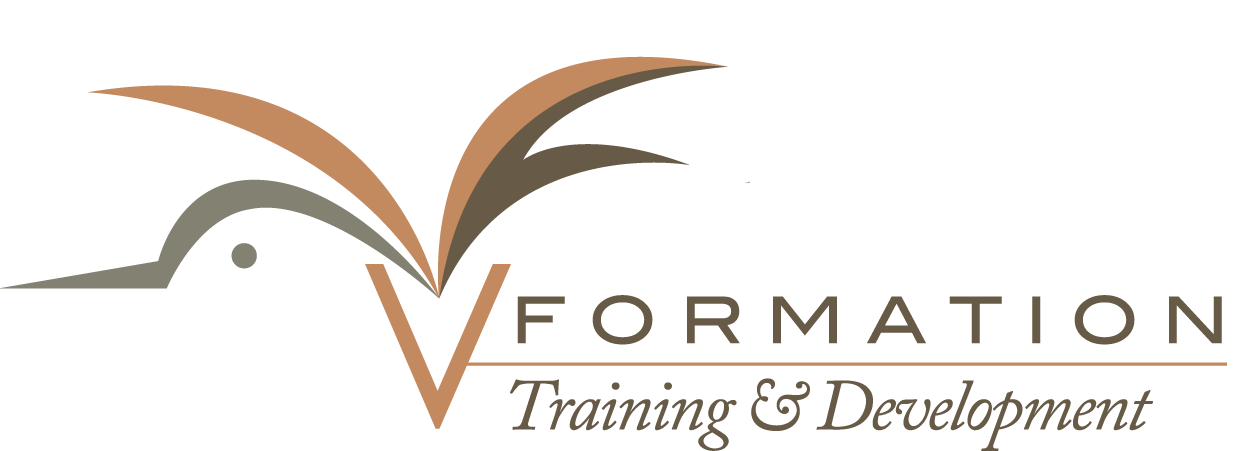
Blog
5 Don’ts of Working Remotely (part or full time): Adapting to The Digital Transformation
By Tony Ragoonanan
I agree that it’s challenging to try to keep things normal when this pandemic has created a situation that isn’t. We have seen both the good and bad elements that this Covid has created and many are dealing with tough situations and choices while trying to navigate their way through them. One of the situations that we have had to deal with is adapting to the remote or hybrid work culture. This means modifying our lives as we work from home (or a hybrid of work and home) and adapting to the inevitable digital transformation, namely, video conferencing platforms for virtual meetings, training, and daily formal and informal interactions.
The pandemic is now under some level of control for the most part, but for some companies, remote or hybrid work continues to be a way of life for many.
For those who do, here are some principles and guidelines that can help you to go through your week:

1. Don’t avoid virtual face-to-face meetings
How often you see your boss and co-workers should not be sacrificed if you are working from home. There are countless reasons why you should encourage the face to face interactions even when it is virtual, but here are a few that I find to be the most important:
- They help employees to become more oriented to virtual collaboration and contribution.
- They break the feeling of isolation.
- They keep conversations going so that initiatives are front and center (Higher levels of clarity)
- They continue to build relationships, especially loyalty and trust.
Remember, on the days when you are not at the office, verbal and psychological cues are somewhat filtered so the more face the face conversations you have the better. Virtual meetings provide an excellent way to help improve the clarity of expectations and drive the productivity of employees regardless of where they might live. Love them or hate them, virtual meetings are here to stay.
2. Don’t take a “back seat” to organizing your space
Just because you r colleagues are not seeing your workspace doesn’t mean that it should be disorganized. It will actually affect you more than it would affect them. What organizing your workspace means is that you are decreasing your “Activation Energy.” I know that this sounds a bit counterintuitive but if you have ever studied Chemistry, you may remember this term. For those who didn’t, “Activation Energy” is the term given to the minimum amount of energy required for a chemical reaction to occur. I’m using this as an analogy to describe the energy required for a person to move from one place to another or from one task to the next.
r colleagues are not seeing your workspace doesn’t mean that it should be disorganized. It will actually affect you more than it would affect them. What organizing your workspace means is that you are decreasing your “Activation Energy.” I know that this sounds a bit counterintuitive but if you have ever studied Chemistry, you may remember this term. For those who didn’t, “Activation Energy” is the term given to the minimum amount of energy required for a chemical reaction to occur. I’m using this as an analogy to describe the energy required for a person to move from one place to another or from one task to the next.
If we could put a system in place to lower the energy required to move, then it stands to reason that we are actually more likely to get it done. For example, if your workspace is a mess, it may take more time to find the items you are looking for. Do you feel like cooking when your kitchen is a mess? The activation energy required would be higher, therefore, you may end up procrastinating or not doing it at all. Can you change something in your surroundings to make your activation energy lower? This goes ‘hand in hand’ with planning your tasks as well. Organizing them is a start.
3. Don’t mix household chores with work hours
The need to get things done will never end and this includes household chores. One of the best ways to deal with this is to batch chores. This way, it doesn’t interrupt your work time. Also, note when your “high-energy” and “low-energy” times occur and schedule your day accordingly. People have different daily rhythms, times of day when they are most effective. Even though this may not be possible for everyone because of the nature of their job, important work or activities that need creativity and intelligence should be scheduled for the time when you are most alert. Routine or mundane tasks should be carried out during periods of low energy.
To an extent that we can actually control, you must protect your peak productivity periods. In other words, “Build a dam.”
In the book “Time Traps: Proven Strategies for Swamped Salespeople” by Todd Duncan, the author stated that it would be a good idea to “build a dam” (dam: a boundary that safeguards against the entry of water at any given time and maintains a predictable, manageable current”). The idea behind this is that we should regulate input and dictate our output. We are certainly not in control of everything that comes into our mental and physical inbox, but we can, to some extent, regulate what we “pressure” ourselves to do.
4. Don’t try to work from anywhere
 There is a particular sofa in my house that I love to lounge on, especially when I get up early in the morning (which is every day) and I have those valuable 2 hours to myself. I love to sit there because it allows me to think, do my deep breathing exercises (I highly recommend it), and do miscellaneous reading on all kinds of non-work-related topics that I enjoy. The problem happens if I try to do any serious work there…not happening!! That couch continues to be a mental “anchor” for leisure that I can’t escape. Of course, I could find the solution for that through some yoga and emotional intelligence tactics, but why spoil my place of leisure even if it’s bad for my posture?
There is a particular sofa in my house that I love to lounge on, especially when I get up early in the morning (which is every day) and I have those valuable 2 hours to myself. I love to sit there because it allows me to think, do my deep breathing exercises (I highly recommend it), and do miscellaneous reading on all kinds of non-work-related topics that I enjoy. The problem happens if I try to do any serious work there…not happening!! That couch continues to be a mental “anchor” for leisure that I can’t escape. Of course, I could find the solution for that through some yoga and emotional intelligence tactics, but why spoil my place of leisure even if it’s bad for my posture?
What I’m saying here is to have a dedicated workspace so that your concentration could be higher and allows your mind to get used to the fact that it’s your workspace. It doesn’t necessarily have to be only one spot but don’t just pick arbitrary areas in your surroundings to do any serious work.
Keep in mind that working from home is not going to be an 8 to 4 situation and bosses shouldn’t expect that either. The focus should be on achieving objectives and goals.
5. Don’t ignore your health
The pandemic has created varying degrees of uncertainty and fear for many and this has been a constant source of stress. However, stress is the end of a process. The beginning is how we deal with what happens in our lives. This is the key to minimizing the effects that stress can have. These include but are not limited to the following:
- The amount of sleep we get
- The type of food we eat
- The amount of physical exercise and relaxation techniques we engage in
- Our perception of situations
- How we communicate (yes! this is actually one of them)
I am in no position to tell you how much sleep is good for you, what type of food to eat, or how much exercise you should get. However, what I will say is this, if you are doing something wrong, your body will tell you. Have you measured the circumference of your waist lately?
Even though you don’t have to do it all at once, creating a routine is the smartest thing you can do. It is actually what triggers our minds to get started on tasks. Routines create habits so the trick is really about cre ating the right habits. There are also types of habits that drive other habits. These are called Keystone Habits. For example, if you start an exercise routine, you may create the habit of drinking more water or eating healthier.
ating the right habits. There are also types of habits that drive other habits. These are called Keystone Habits. For example, if you start an exercise routine, you may create the habit of drinking more water or eating healthier.
Body and mind go hand in hand so when it comes to your mind, how you perceive situations (the stories you tell yourself) is also a habit and this has a tremendous amount of impact on how you feel. Applying objectivity and a bit of realistic optimism to situations will help you to reframe them in a way that reduces the negative impact they can have. This is a contributing determinant to how you make decisions, how you “show up” to others, and how much you get done.
As for getting things done; is your time being taken away by you saying “yes” to everyone’s demands? This factor is a significant one and follows from the previous “don’t.” It doesn’t necessarily apply only when you are working remotely but I included it here because it will certainly affect you ten-fold if you are. The reason for this is because saying “yes” to everyone will affect all of the other “don’ts” that I explain here. For example, you may not get the break you need, or get a chance to do the household chores you needed to get done if you are guilty of this one.
I am sure that there are things you have to do….I understand, but the minute someone realizes that you’re a “yes” person, they may come to you for everything. The unpleasant ones will simply “walk” all over you. If you plan to do everything that colleagues ask you to do or to think that an “URGENT” request always means “right now,” there is a psychiatric hospital here that will house you for free!!
“You can please some of the people all of the time, you can please all of the people some of the time, but you can’t please all of the people all of the time.”
– John Lydgate (fifteenth-century monk and poet).
Your level of assertiveness here is crucial. It doesn’t necessarily have to be you literally saying “NO.” As alternatives, you can try:
“Is it possible to give me a deadline?” (because with a deadline, you can plan your work more effectively)
or
“You gave me 3 “URGENT” tasks today, which do you want first?”
or
“I already made plans with my family later. Is there someone else who could get this done? If no, I can work on it first thing tomorrow.”
This is not being rude, you are actually attempting to create a “win-win” situation for everyone. This is not always possible in every situation but it is important to know how to go about it. It is simply “building your dam.
____________________________________________________________________
A final note
Maximizing productivity as we continue on the constantly evolving path to digital transformation while working from home or in a hybrid setting can be a very subjective experience. Not everyone can use the rules the same way therefore it is important that you find a path that is right for you. This may involve adjusting the rules to suit your job or lifestyle. Maybe the bright side of the pandemic is that the flexibility that this scenario has created through technology will forge the path to higher levels of efficiency, profitability, and growth.
If you found this blog useful, please leave your comments and feel free to share with your colleagues.
Tony  Ragoonanan is the Founder of V-Formation Training & Development. As a Trainer and Performance Management Specialist, he helps individuals, teams, and businesses to align behaviours and goals, create the right organizational culture and maximize capability. Outside of this, it’s all about family, football, and fitness!!
Ragoonanan is the Founder of V-Formation Training & Development. As a Trainer and Performance Management Specialist, he helps individuals, teams, and businesses to align behaviours and goals, create the right organizational culture and maximize capability. Outside of this, it’s all about family, football, and fitness!!
868-681-3492 | tonyr0909@gmail.com




Leave a reply